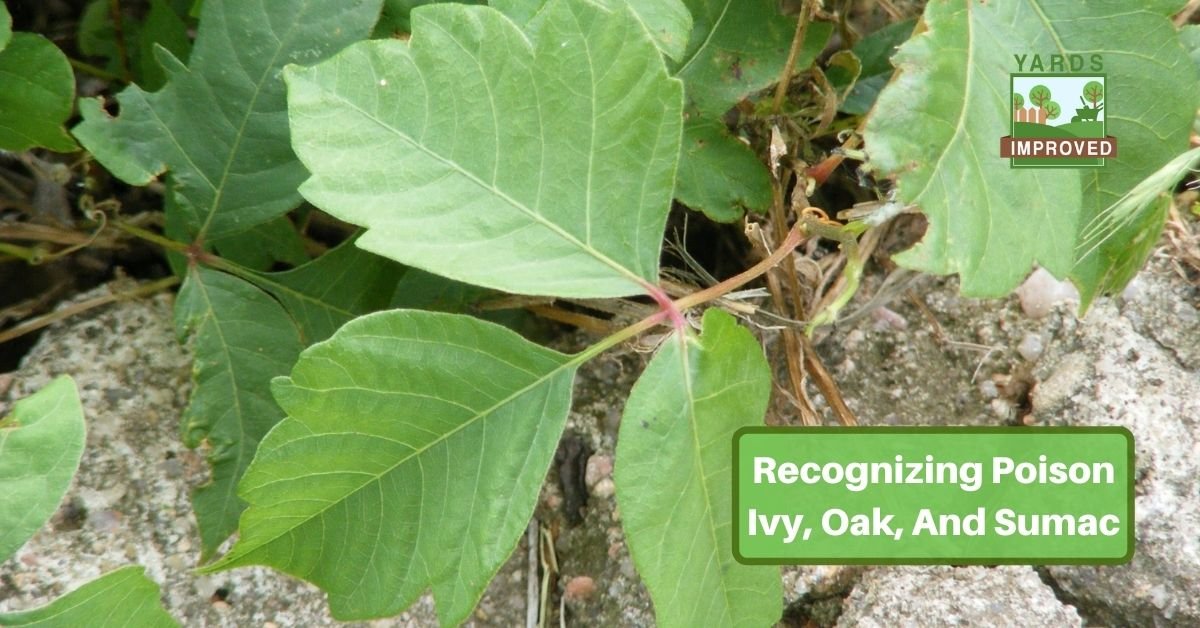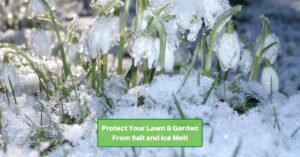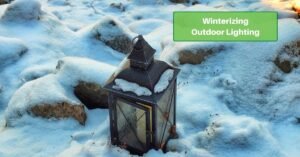Sure, we all expect a little sweat and maybe a few bug bites when we do yard work. But we don’t want to come out of it an itchy, scratchy mess! But if you run into poison ivy, oak, or sumac, that could be what happens.
These three plants can cause discomfort and pain that lasts for weeks. And all it takes is coming into contact with them! It’s easy for them to turn up in your yard, especially if you live on the edge of a wooded area. But even if not, they could spring up along with other weeds, possibly spread there by birds or other animals.
It’s a good idea to be able to identify these plants so you can avoid them. But if you do get infected, you should know how to treat them, too. But first, let’s talk about avoidance!
How To Avoid Getting Infected
The chemical that causes a reaction to any of these plants is urushiol. And almost everyone is allergic to it; that’s why people have such a strong reaction.
This plant oil can be on any part of the plant. That means the leaves, stems, berries, and flowers can all spread it.
The reaction usually only occurs through contact. But it can, in rare cases, spread through the air. If you burn the plant, though, the smoke could carry it into your nose, mouth, and eyes.
The best protection, then, is to avoid getting the oil on your skin. That’s one of the reasons to wear long pants, long-sleeved shirts, and gloves while working around the yard.
Recognizing Each Plant
Poison Ivy
Poison ivy is the best-known and most widespread of these poisonous plants. There are two similar varieties. They grow throughout the US and Canada, except for California, Hawaii, and Alaska.
The well-known rhyme “leaves of three, let it be; berries white, a dangerous site” is accurate. The berries develop in fall and early winter. Of course, many other plants also have white berries and three leaves. But this is a good start!
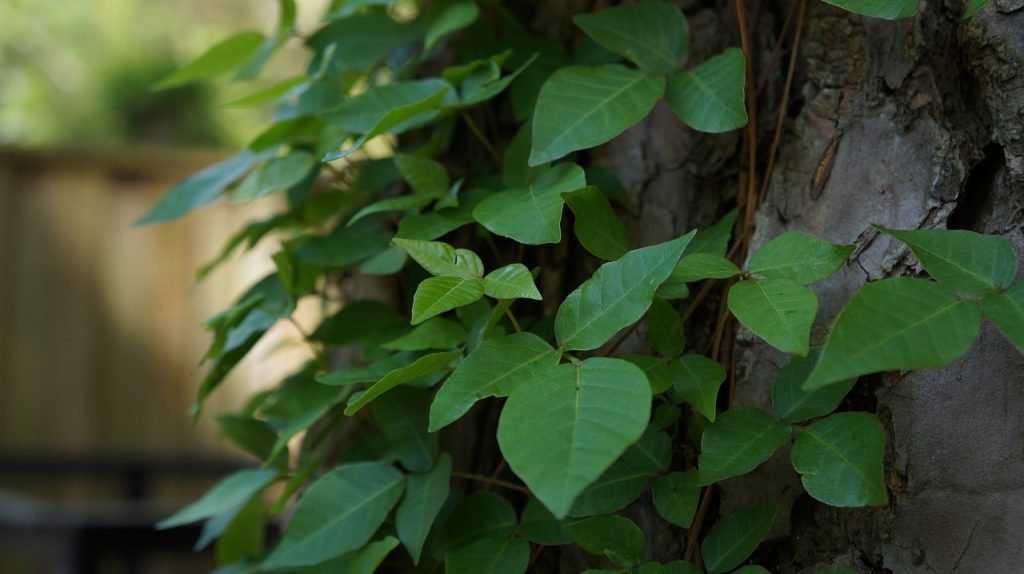
Neither the berries nor the leaves grow directly across from each other. That is, they’ll always be slightly staggered on the stalk.
You’ll also notice a sheen caused by the oil.
The eastern variety of poison ivy usually grows as a vine. But the western version is a shrub.
Poison Oak
Far less common is poison oak. One variety makes it home in scattered regions in the southern and southeastern US. Another makes its home along the Pacific coast. Its range is from British Columbia through California as well as in Nevada.
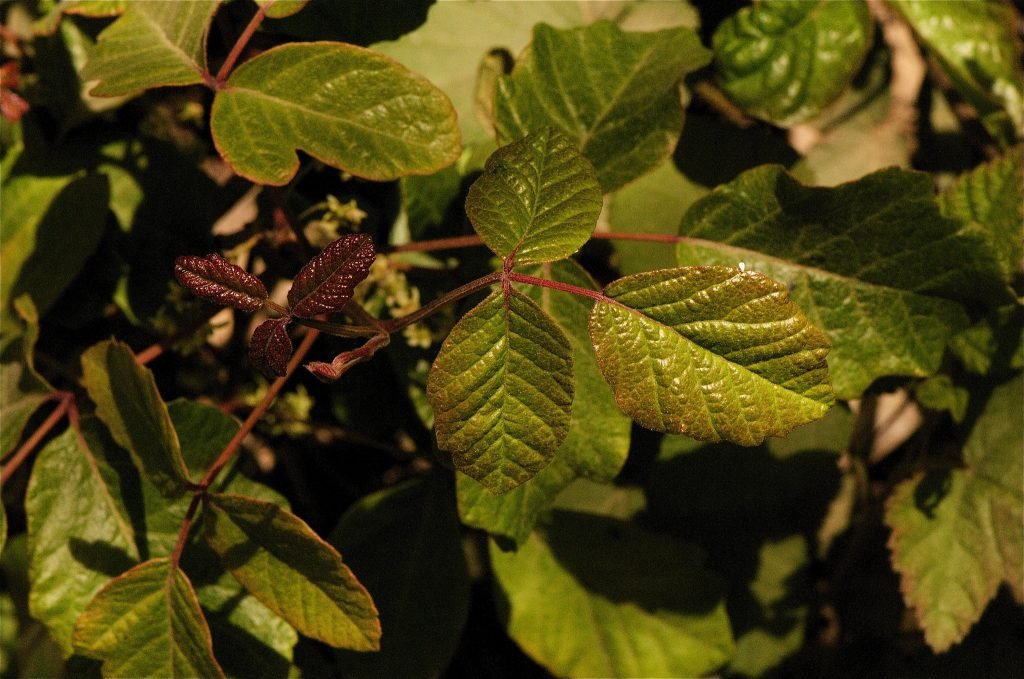
The leaves look like oak leaves, with at least three leaflets. Sometimes, there can be as many as seven, though.
It can be a vine or a shrub.
Poison Sumac
Most often found in boggy areas, poison sumac sprouts up in the eastern part of the US and as far west as Texas. If you know what “regular” sumac looks like, it’s easy to get confused.
Between seven and thirteen leaflets can grow along one reddish “stem.” Together, these count as a single leaf. They appear on either side with one at the point. It can be a small shrub or tree.
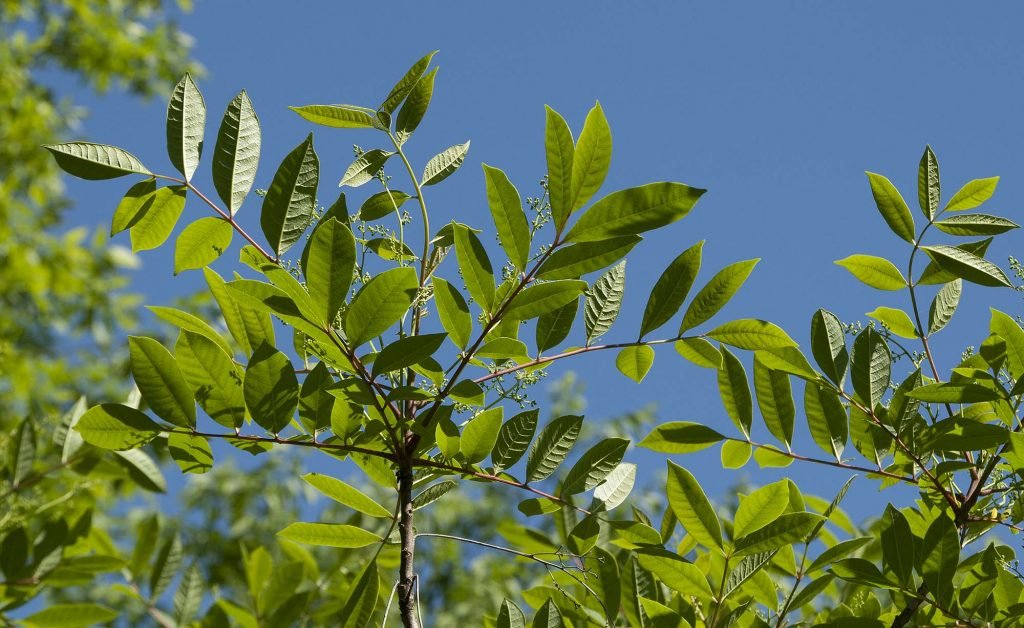
The leaves also changed seasonally. During spring, they are orange, then turn green in summer and reddish in fall.
The shine of the oil is one of the giveaways that this is the poison variety. Also, the non-poisonous version is the one that grows the red fruit system at the end of its stalks.
What To Do If You’ve Come In Contact With Urushiol
If you think you’ve touched any of these plants, wash with soap and water as soon as possible. Try not to touch any parts of your body that contacted the plant. Be especially careful not to touch your face! You could spread the oil from one place to another.
If you don’t have soap and water handy, you can use rubbing alcohol.
A rash can appear within 24 to 72 hours after exposure.
See a doctor if:
- it becomes hard to swallow or breathe;
- the rash is around your mouth, eyes, nose, or genitals;
- you have swelling in your face;
- itching keeps you from sleeping, or
- the rash or blisters cover most of your body.
If the rash is mild, you can treat it at home. But if you’re not sure that contact with one of these plants caused it, check with a dermatologist first!
Avoid touching and scratching; this can open wounds and also spread the infection.
Calamine lotion or hydrocortisone cream can soothe itching. Warm baths (not hot nor cold) can help as well. Apply cold compresses for further relief.
Don’t use antihistamine lotions on it. However, you can take antihistamine pills like Benadryl. Claritin is another good alternative, especially if you don’t want to feel drowsy.
The rash usually goes away in 7 to 10 days. If it drags on longer than that, see a dermatologist. If it seems infected, do the same.
Be sure to wash your clothes if you had (or may have had) contact with these plants. A regular cycle with laundry detergent should remove the oil. Otherwise, you run the risk of spreading the oil by touching your clothing.
Conclusion
Nature is beautiful, but there are plenty of things to avoid! Be on the lookout for poison ivy, sumac, and oak. Know what they look like so you can avoid them. If you become infected, seek medical help as necessary and care for the rash carefully. Get well soon!

